Erantis is a rather interesting flower that attracts gardeners with some of its own characteristics. The fact is that the second name of Erantis is the "Springnik". The pretty tender-yellow color flowers are capable of looking out from under the snow, which has not yet had time to melt. Erantis is a serious "competition" to the snowdown. This charming flower is able to decorate your site of the earliest spring and give you a feeling of the emergence of heat and the sun. In this article, we will consider the peculiarities of growing Erantis in the open ground, we learn about the "whims" of this plant.
Eurantis. Plant Description
Erantis flower may be for you a little-known plant. But it's worth seeing you to see how this plant is blooming, you will not be able to resist his landing at home. The name of the flower comes from the Greek words "ER" and "Anthos", which means "Spring" and "Flower". Very often you can hear the second name of Eurantis - the Springnik.
- Erantis can be found in the wild in Southern Europe, Japan. It is also common in North America and Northern Europe.
- Erantis belongs to the Familic Family and has about 7 species.
- Erantis stem reaches about 15 cm.
- Eurantis is a low herbal plant.
- Erantis's root has a cheerful shape.
- Eurantis leaves have a dark green color and a finger-separate shape.
- Erantis flowers are achieved in diameter up to 3 cm and consist of 5-7 cup of juicy yellow color.
- Erantis flowering period comes the earliest spring, when it did not reach the snow, and lasts about 14-21 days. In countries with sufficiently soft climatic conditions in winter, Eurantis can be pleased with flowers in January.
- After the flowers are wondering, fruits appear with seeds. Seeds small brown color.
Eurantis. Photo
Eurantis. Plant varieties
Eurantis Winter
Erantis Winter is also called the Springnik Wintering. His homeland is Southern Europe. In the wild, it can often be found in the forests of Greece, Italy. Prefers air and loose soils. Blossom starts early in spring. The name of the species speaks for itself. Erantis Winter begins to grow intensively after the first signs of melting of snow. Flowers feature is their ability to close the cups in cloudy weather. In this way, these adorable yellow flowers are protected from excess moisture. In all its glory, they appear only in sunny and dry weather. At the end of the spring, the entire above-ground part of the plant dies, but the root system continues to develop. The stem reaches a height of up to 15 cm. Eustian winter is capable of multiplying both in the seed method and rhizable. In decorative purposes, it is used quite a long time - from the 16th century. Among the most popular varieties can be allocated:
- Pauline. Relatively young grade, which was derived in England, especially for decorative cultivation in the gardens and in areas.
- Orange Glow. This hybrid erantis grade is also famous for juicy yellow colorful colors. The country of origin is Denmark.
- NOEL AY RES. The spring was accidentally discovered by one gardener in England and was named in his honor. Further differs from other varieties of beautiful shape by terry flowers.
Erantis Winter is pleased with its bloom for a short time - about 2-3 weeks. Flowers attract the attention also to the fact that right under them is the "collar" from the leaves.
Eurantis Periston Dresses
Eurantis Periston Dresses is noticeably different from his fellow. First, his flowers have an unusual coloring. White petals are successfully combined with yellow neckers and blue stamens. Secondly, Erantis Periston Dresses is known for his endurance. However, gardeners do not advise him to grow it in the open soil. This species reached the greatest popularity in the cultivation of pots, containers, alpinearia. The birthplace of this species is considered to be Japan.
Eurantis Long-fashioned
Eurantis Long-fashioned is often called Erantis long-dryed. Its stem can reach a height of 25 cm. The plant is grassy with the root system in the form of a tuber. Flowers are painted in a bright yellow color, small in size - 3 cm in diameter. The flower consists of 6-7 cups. The flowering period falls on May and lasts about 14-21 days. Can multiply in a seed way. Seeds of spherical and small, enclosed in the fruit of an elongated shape.
Eustian Siberian
Sibisk Erantis is widely growing on meadows, edges, forests of Eastern and Western Siberia. Flowers have a beautiful white color. The plant begins to dry intensively after the end of the flowering period. Flowers from May to June. Eurantis Siberian - a plant is low with a straight and weak stem.
Erantis Star
Eurantis Star in the natural nature is widespread in the Far East. The flower is so beautiful and charming. What a huge number of plants go to create bouquets. Erantis grows up to 20 cm. A remarkable feature is an absolutely fantastial stem with a single snow-white flower on top. The flower resembles the form of a bright star in the shady forests of the East, because of what was so called the view. Prefers to grow on soils with a high moisture level, on very highly shaded edges, under the crowns of trees in mixed forests.
Eurantis Tubegen
Eurantis Tubegen is a hybrid variety that was obtained when crossing Erantis Winter and Erantis Kilijsky. The main feature of this species is that the flowers do not form seeds and pollen. This is exactly what allows you to enjoy the longer blooming of beautiful yellow colors. Popular varieties are:
- Guinea Gold. The variety was bred in Holland. The plant reaches a height of 10 cm. The flowers reach 3-4 cm in diameter. The advantage of the variety is its long flowering;
- Glory. Also quite popular variety of erantisov Tubergena. Gardeners celebrate its advantages: large flower size and nice foliage color.
Erantis Cilicia
This species was originally widespread in Greece and Asia Minor, and only then were introduced into Europe. Flowering period erantisa Cilicia begins 2 weeks later than the erantisa winter. Species is not very popular with gardeners because its flowering is not too active. And frost erantis Cilicia significantly inferior erantisu winter. A distinctive feature is the color of young leaves - purple with a red tint. The leaves are very much dissected into narrow blades. Erantis grows to 10 cm.
Erantis. Landing
Step 1: Choose a spot landing erantisa
- In the natural world erantisy grow at a very sunny areas and in partial shade under the spreading canopy of trees. When erantisa landing on your site give preference to a place that gets enough sunlight. The best option will be the south or west side of the garden.
- Location growth erantisa must have good drainage. Small plants are brittle and can quickly rot when an excess of moisture.
- Erantisy prefer to grow on neutral soils. Experienced gardeners are well aware of the soil on your plot. But for the novice amateur rearing of ornamental plants determination of the type and composition of the soil can be a hassle. To make this easier, you can use the services of specialized laboratories, where you want to include soil samples from your site. Experts reliably determine the composition of the soil. Knowledge of this information will help you not only in the growing erantisa, but also other plants in your yard. If it turned out that the soil is too acidic, it is necessary to make lime.
- The best landing sites would erantisa loamy soil.
- Erantis not too picky about the soil nutrient. But if the soil is sufficiently rich in trace elements, it will have a positive effect on the flowering of this plant.
- Erantisa for planting can be selected as an open area, and a place in the fruit, ornamental trees.
- The soil should be fairly light and fluffy.
- When choosing a site for planting erantisa also avoid low-lying places. In the spring there will accumulate large amounts of meltwater and ice crust.
Step 2. Planting erantisa
- If you sit down the young tubers Eurantis, then you can soak them for 12 hours in water for better rooting and germination.
- Erantis seeds advise landing at the end of summer or in autumn. Blowing seeds to the ground is not worth it. It is enough to cover the layer of Earth in 1-2 cm.
- Sowing seeds can also be sprinkled with a lot of leafy ground and be sure to pour. In the spring, only seedlist leaves will appear, and Eurantis will bloom only on the 3rd year after landing.
- Erantis tubers are planted on a depth of about 5 cm and watered.
Some gardeners in order to ease their care for Eurantis, plant it in drawers, which then bury. After Erantises from the seeds formed tubers, they can be transferred to another place of growth.
Eurantis. Care
Eurantis landing and care at all do not represent difficulties even novice gardeners. Store the following recommendations for caring for this flower:
- eurantis loves wet soil, but does not tolerate the convergence. His little tubers can start rotting. In the phase of active flowering, you need to ensure that the soil has always been slightly moistened. Preventing excessive overwhelming you will help you a good drainage;
- erantis can wonderfully do without feeding fertilizers. But some gardeners still try to "indulge" the plant weak solutions of mineral fertilizers. They can be made before the rise of the vegetative phase of growth, after the end of flowering and fall;
- after Erantis fledged, do not allow weeding grass in this place. Remember that the club's tubers are still under Earth. Arrange a periodic canopy of this area;
- summer time is a kind of rest period for this "winter" flower. At this time, the frequency and intensity of watering can be reduced. Erantis is well tolerating the conditions of a small drought in the summer;
- due to the fact that after drying the above-ground part of Eurantis, his tubers remain under the ground, it is impossible to plant other flowers on the "released" place. Sit them nearby.
Adhering to these elementary erantis careals, you will achieve beautiful and bright flowering in the spring, save and successfully open this flower for the next seasons. At the same place, Eurantis can successfully grow to 5 years.
Reproduction of Eurantis
The most popular methods of breeding and seed erantisa are using tubers. But this plant is great to proliferate and self-seeding. If your site is already growing erantis, do not be surprised if you find a new colony of the plant in another, more remote location. This fact can be easily explained. Small seeds are often taken away by ants throughout the site.
Reproduction erantisa seeds
Growing erantisa seed method is popular among gardeners. After a packet of seeds ready without any problems can be purchased in almost any specialty store for gardeners.
When buying seeds, always pay attention to the expiration date. Inexperienced gardeners can forget about such an important criteria for selecting seed. Seeds with expired shelf life can not germinate, the seedlings will not be amicable. Seeds can get, for free, if you or someone you know is already growing on the site erantis. After ottsvetut beautiful yellow flowers, fruit wait for the formation of seeds. They must be carefully collected, sifted, dry. Erantisa sow the seeds of the following ways:
- sowing seeds erantisa spring. For spring planting seeds must undergo stratification. If you do not, then shoots may turn out uneven. Stratification should be carried out 2 weeks at a temperature of from 1 to 20 degrees and 2 months at about 2 degrees;
- sowing seeds erantisa fall. The most preferred time of planting is considered erantisa autumn. When waiting for the beautiful flowers in this case? It all depends on the variety you choose. Some erantisy spring release only cotyledon leaves, which quickly dry out. It seems that the plant does not accept and died. But this is not the case. Small nodules have already formed, and next spring you will enjoy the carpet of yellow flowers. There are varieties of erantisa that bloom once in the second year of planting. They are typically planted in late autumn together with snowdrops. And very early in the spring of your absolutely "naked" garden plot and delicate sparkle shades.
Reproduction erantisa tubers
Erantis wonderful and can be propagated by using tubers. It should adhere to the following guidelines:
- if you already erantis grows, it is quite possible to dig up and transplant to a new height. Tubers can even cut. cut site be sure to sprinkle the charcoal to prevent rotting;
- erantis tubers are very small. They can be very easy to confuse with sand or clay lumps. Gardeners with experience are recommended to sift the land after driving tubers in order not to lose planting material;
- erantis tubers do not require a deep fit. It will be enough to dig a hole to 5 cm deep;
- before immersing Erantis's tubers in the hole, support it with a lot and add some lime;
- eurantis looks particularly effectively in group landings. In one boarding fossa, it is quite possible to place about 5-6 tubers. Between the plants, withstand the minimum distance of 6-7 cm;
- if you dug up Erantis's tubers, then they are desirable to immediately put on a new place of growth in order to prevent their breathing. If you can not immediately plant them, keep the tubers a short time in a wet peat;
- when reproducing Erantis, it is important not to forget that even after the above-ground part of the plant dried, its root system continues to grow and develop. Do not allow excessive growth of weeds in the place where Erantis bloom, do not allow you to pull out this area. Erantis, which breeds with tubers, is able to grow in one place for about 5 years.
Erantis in landscape design
Erantis - Spring decorative flower. He is able to become a real "pearl" of your garden, when all the other trees, shrubs and flowers still "did not wake up" from the winter hibernation. It was Erantis that it is able to create an illusion of the yellow "carpet" in the garden. Why is this plant so far not so popular among gardeners? Perhaps not everyone knows with which plants it is worth combining whether it is worth combining at all where to plant, etc. Eurantis can be grown both independent decorative plant and in combination with other plants:
- lungwort;
- snowdrop;
- crocus;
- galantus;
- miniature coniferous breeds of plants, etc.
Eurantisi will be spectacularly looking at almost anywhere in your garden. You can plant this plant on the area under the trees, on the open plot, between shrubs, on the Alpine slide, in the Stone Garden. Once after seeing the early spring charming yellow "sunshine" from under the snow, you do not want to part with them. Moreover, landing and care for Eurantis can be even novice gardeners.

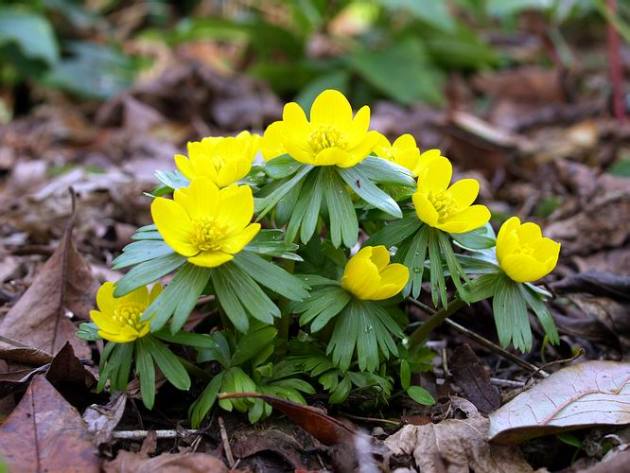
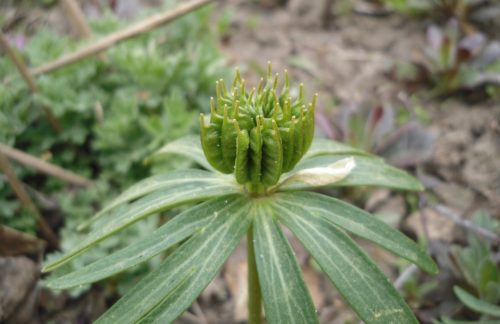
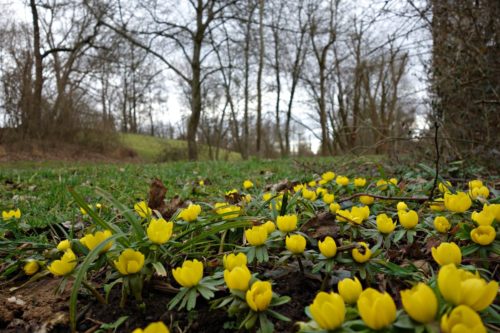
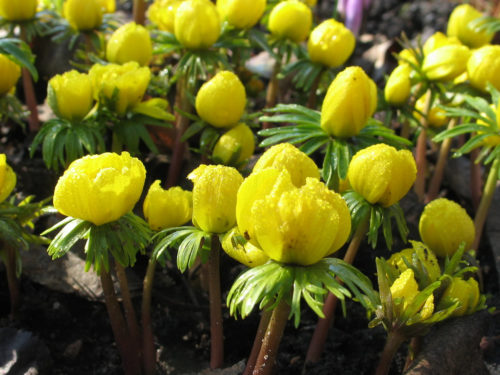
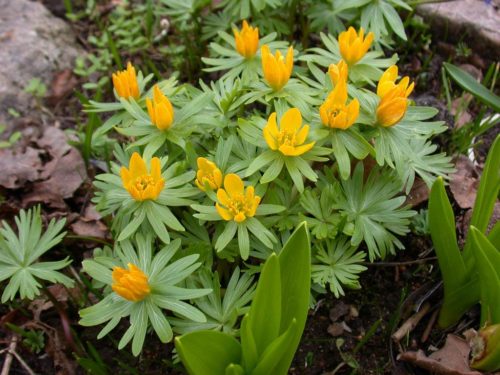

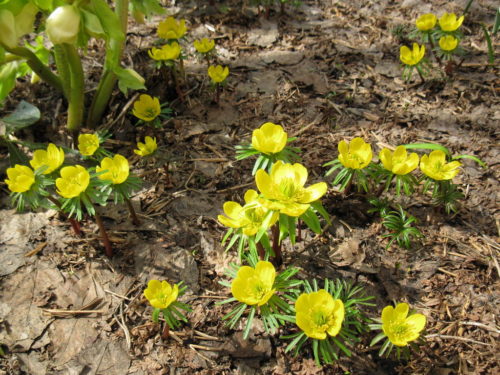
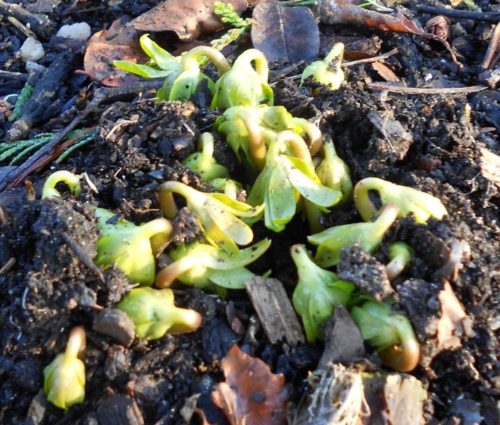
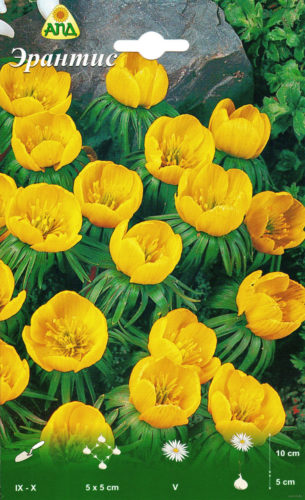













 Start a discussion ...
Start a discussion ...